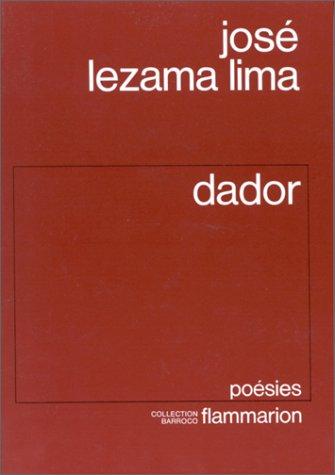4.1.2.2.6 “Dador”, poetic work published in 1960 by José Lezama Lima (1910 – 1976)

Although the poetry collection “Dador” was published in 1960, the pieces that comprise it were conceived before 1959, and therefore correspond to the typically Origenist sensibility – there was no break as such in Lezama’s poetics after that date – its verses combine elements of sensible reality and Lezama’s own imagination with a harmony that is not exactly musical but that concerns the coherence of the texts.
It is part of this collection of poems, “El coche musical” (The Musical Car), in which a reality created by Lezama becomes transparent, a kind of oasis in which the encounter of two beings alluded to a poetic state distinct from the environment, created by the hallucinatory succession of images that swirl around the possibility of another nature, recently created, settled upon the other, that of divine imprint.
In this regard, Fina García Marruz expressed: “The book is thus inserted into the realm of inscriptions, of hieroglyphics, of what, as in ancient lost cultures or in the American aborigines, brings with the slime of the hermetic, the first fruits of a communication through ornament, schematic figures or dance.”
The poet and literary scholar sees an analogy between the book’s title and one of the names given to the Holy Spirit. In this sense, the text fills a gap in history that had not yet reached its full potential, that is, at the time of writing. Some of the poetic prose writings have a fabled tone that recalls universal archetypes, especially with regard to the eternal dialogue between poverty and wealth.
Here Lezama opts for an understanding of reality that is not purely cognitive but rather combines multiple components, ultimately pointing towards the apprehension of reality, true knowledge, as a whole in which flesh and spirit, intelligence and pristine affection participate, knowledge as a derivative of the relationship, an authentic link with the object, which is feasible, and perhaps only through poetry.
The collection of poems is not a finished formal creation, with pretensions of perfection; here the poet offers another beauty that does not reside precisely in the flow but in a kind of roughness in the transit of images, given by their non-contemplative but transformative character, forging an incarnate poetry and at the same time a celestial pretension of flight.








